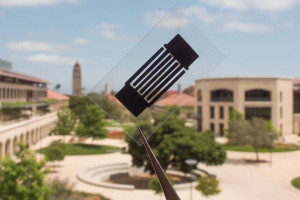
The “designer carbon” improved the supercapacitor’s electrical conductivity threefold compared to electrodes made of conventional activated carbon.
Image: Stanford University
Stanford University researchers have developed a new “designer carbon” that can be fine-tuned for a variety of applications, including energy storage and water filters.
The newly developed carbon material has shown that it can significantly improve the power delivery rate of supercapacitors and boost the performance of energy storage technologies.
“We have developed a ‘designer carbon’ that is both versatile and controllable,” said Zhenan Bao, past member of ECS and the senior author of the study. “Our study shows that this material has exceptional energy-storage capacity, enabling unprecedented performance in lithium-sulfur batteries and supercapacitors.”
(PS: Check out some of Bao’s past papers in the Digital Library!)
Not only is the new carbon an improvement over existing versions, it also has a huge potential scope and is inexpensive to produce.
A majority of cheap carbon is developed from coconut shells. By burning the coconut at a high temperature, the carbon becomes active. However, the researchers opted to develop a new, inexpensive, and uncontaminated way to produce carbon through the use of chemicals and polymers.
“Hydrogel polymers form an interconnected, three-dimensional framework that’s ideal for conducting electricity,” Bao said. “This framework also contains organic molecules and functional atoms, such as nitrogen, which allow us to tune the electronic properties of the carbon.”
Tests were conducted on both supercapacitors and batteries to see how the new material performed in real-world conditions. For supercapacitors, electron conductivity improved threefold compared to the same devices with conventionally activated carbon.

